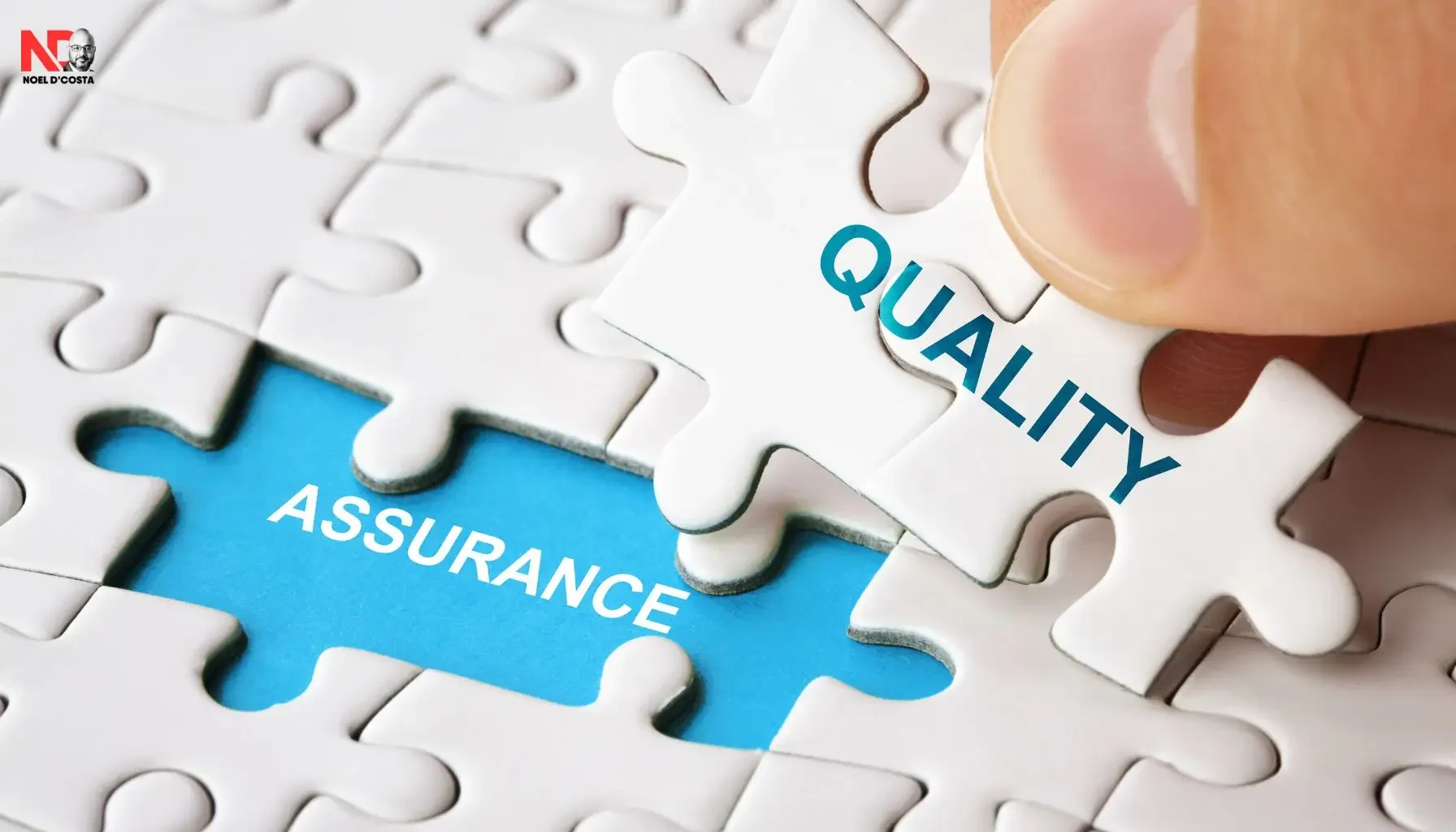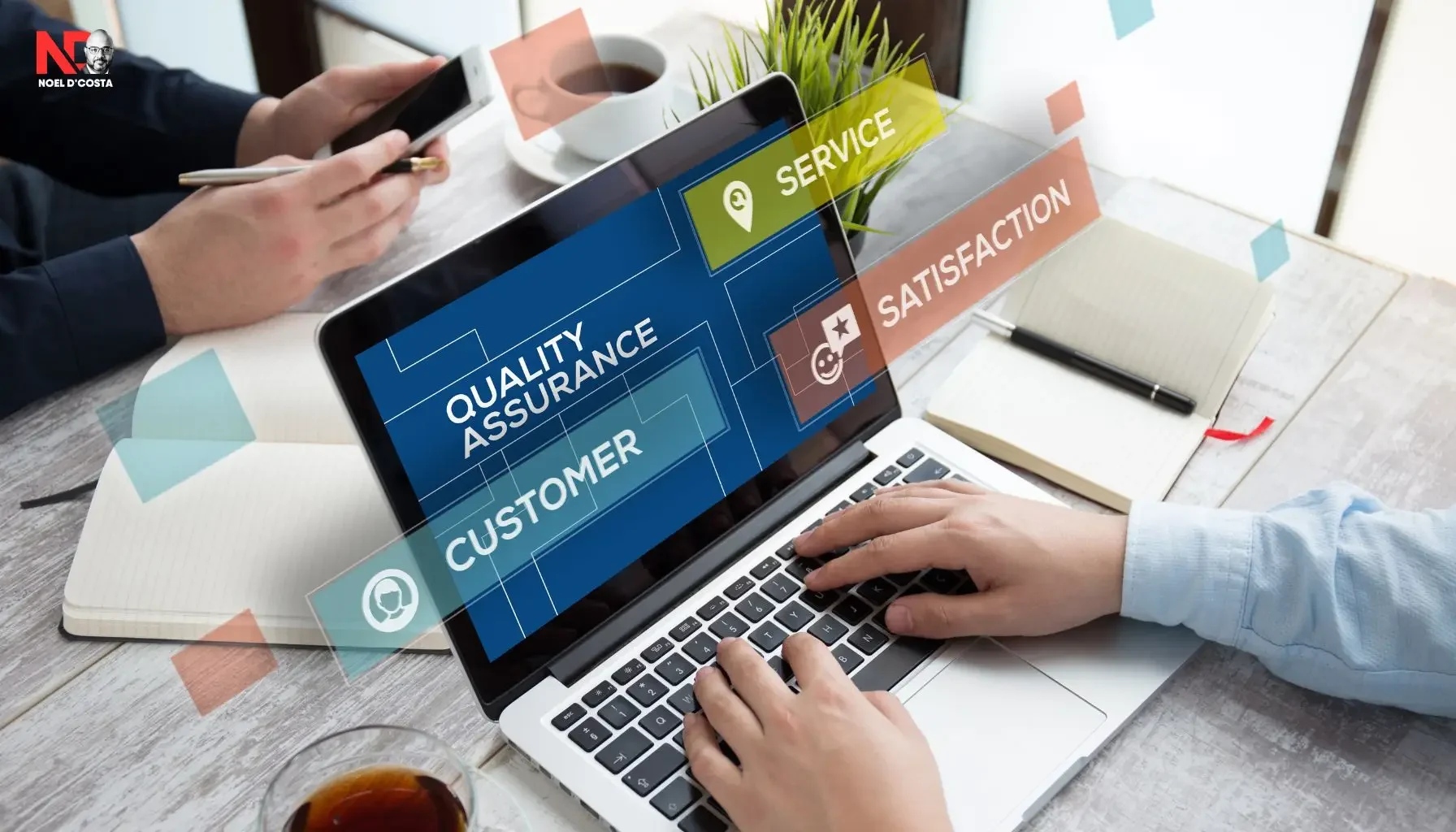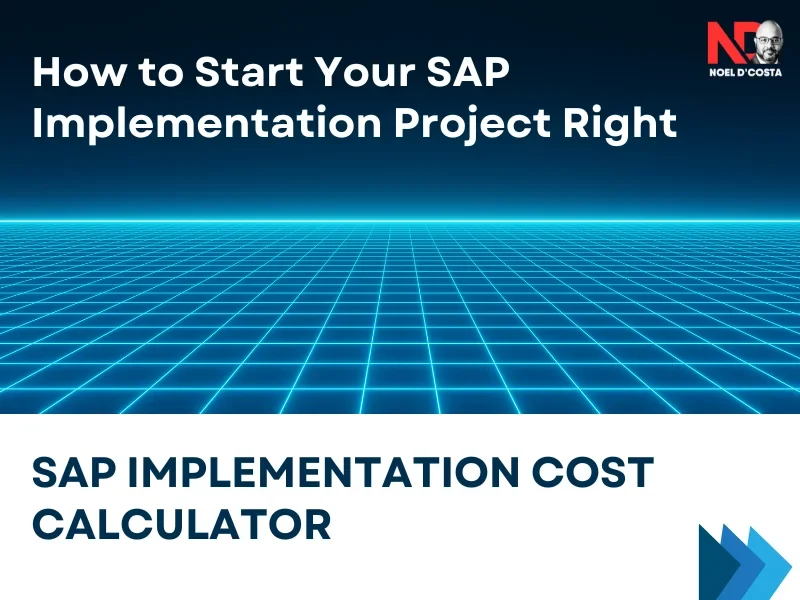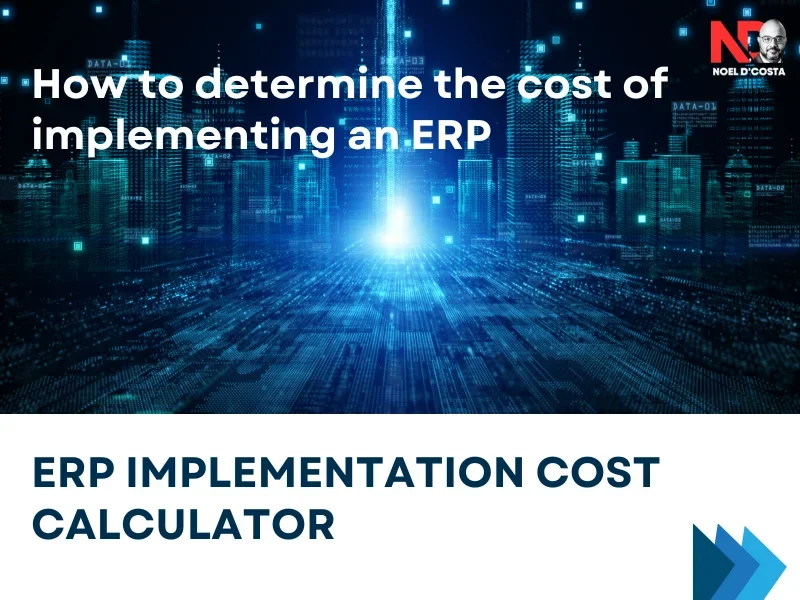SAP Quality Gates Implementation: 10 Fixes for Common Issues

NOEL BENJAMIN D'COSTA
I hope you enjoy reading this blog post. If you need any advise, please do not hesitate to reach out by clicking here
The project was on the verge of chaos. A global manufacturing company had invested millions in their SAP implementation, expecting seamless integration and smooth operations. Instead, they faced scope creep, delayed timelines, and escalating costs. Meetings turned into blame games, and the leadership team was losing confidence. When I took over, the first thing I did was implement SAP Project Quality Gates.
Now every implementation is usually done with SAP Activate. However, I’ve seen companies that don’t really use it correctly. When the company truly adopts SAP Activate, they discover the power of embedding Quality Gates into their project.
Each phase—Explore, Realize, Deploy—had clearly defined checkpoints that evaluated progress against predefined quality criteria.
SAP Activate prevents issues from happening in the first place. For example, during the Explore phase, a detailed SAP blueprint quality review uncovered a misalignment between the system design and business needs. Fixing it early saved them from costly rework down the line.
By implementing Quality Gates, the company regained control. They delivered the project on time, within budget, and with stakeholder confidence restored.
In this guide, we’ll explore how you can avoid similar challenges by leveraging SAP Project Quality Gates within the SAP Activate methodology. Right from ensuring SAP project governance to minimizing risks, these gates could really benefit your project and give you better transparency!
Key Takeaways
Implementing SAP Quality Gates ensures each project phase meets specific criteria before moving forward. This approach reduces risks and enhances project success. Here are six key takeaways:
- Structured Checkpoints: SAP Quality Gates introduce formal checkpoints during the project lifecycle, ensuring deliverables meet predefined standards before proceeding.
- Risk Mitigation: By identifying and addressing issues early, Quality Gates help prevent costly errors and delays later in the project.
- Enhanced Compliance: These gates ensure that each phase complies with organizational and regulatory requirements, reducing the likelihood of compliance issues post-implementation.
- Improved Stakeholder Confidence: Regular assessments boost stakeholder trust by demonstrating commitment to quality and project objectives.
- Cost Efficiency: Early detection of potential problems through Quality Gates can lead to significant cost savings by avoiding rework and project overruns.
- Alignment with Business Goals: Implementing Quality Gates ensures that project outcomes are consistently aligned with business objectives, leading to more effective solutions.
Incorporating SAP Quality Gates into your project management strategy can lead to more efficient and successful SAP implementations.

What Are SAP Quality Gates?
Every SAP implementation comes with high stakes—tight deadlines, limited budgets, and high expectations. A single misstep can ripple through the project, causing delays, cost overruns, and quality compromises. This is where SAP Quality Gates make the difference.
SAP Quality Gates are structured checkpoints built into the SAP Activate methodology. These gates ensure each phase of the project meets strict quality criteria before progressing.
From the Explore phase, where the SAP blueprint quality is assessed, to the Realize phase, where SAP testing phases verify system functionality, these gates ensure nothing is left to chance.
Before go-live, compliance reviews validate readiness against legal and operational standards, reducing SAP implementation risks and ensuring smooth delivery.
Why are they critical? Research shows that projects with structured Quality Gates experience 30% fewer delays and stay on budget more often. By catching issues early, Quality Gates frameworks prevent costly rework and missed deadlines.
Tools like SAP Solution Manager integrate with these gates, enabling automated quality checks to streamline processes and maintain transparency.
In this guide, we’ll explore how SAP Quality Gates enhance project quality management and minimize risks, while aligning every phase with your business goals. Ready to ensure your SAP project’s success? Let’s get into it!

Importance of Quality Gates in SAP Implementations
The success of an SAP implementation hinges on one thing: control. Without the right safeguards, projects can veer off course, leaving you with missed deadlines, spiralling costs, and frustrated stakeholders. This is where SAP Quality Gates prove indispensable.
By embedding Quality Gates frameworks into your implementation, you establish clear checkpoints that reduce risks and ensure compliance at every phase. These gates force teams to pause, assess deliverables, and address potential issues before moving forward.
For instance, during the Realize phase, quality checks identify gaps in testing, while pre-deployment reviews ensure SAP compliance standards are met. These steps aren’t just procedural—they’re lifesavers.
Key Benefits of SAP Quality Gates:
1. Reduce Risk
During the Realize phase of a manufacturing company’s SAP implementation, a Quality Gate review identified a misalignment between the configured inventory process and the actual warehouse operations. Early detection allowed the team to reconfigure the process, avoiding significant disruptions during go-live.
2. Ensure Compliance
In a public sector SAP project, a pre-deployment Quality Gate validated that financial processes met government regulations for audit trails and tax reporting. Addressing minor gaps at this stage prevented legal penalties and ensured a smooth compliance audit post-implementation.
3. Enhance Stakeholder Confidence
Regular Quality Gate meetings in a retail company’s SAP rollout provided clear status updates and transparent reviews of deliverables. This fostered trust among stakeholders, including leadership and functional teams, ensuring their continued buy-in throughout the project.
4. Improve Cost Efficiency
A Quality Gate in the Explore phase of a pharmaceutical company’s SAP implementation identified missing system requirements early on. Addressing these before the Realize phase saved the company an estimated $200,000 in potential rework costs.
5. Optimize Time Management
By adhering to structured Quality Gate reviews, a logistics firm’s SAP team prevented bottlenecks in the testing phase, keeping the project on track and avoiding delays in the planned go-live date.
6. Streamline Resource Utilization
A global SAP rollout for a tech company used Quality Gates to align cross-functional teams. Clearly defined checkpoints ensured resources focused on phase-specific goals, preventing redundant efforts and maximizing productivity across regions.
These examples highlight how SAP Quality Gates provide tangible value, ensuring projects stay on track, compliant, and efficient while building stakeholder trust and reducing costs.
Research shows projects with structured Quality Gates reduce overruns by up to 25%, proving that these checkpoints aren’t just helpful—they’re essential. Let’s explore how they can transform your SAP project delivery!

Check out these topics
How to Design an Effective SAP Quality Gate Framework
Designing an effective SAP Quality Gate framework is the cornerstone of a successful implementation. Without a structured approach, even the best intentions can lead to missed milestones and compromised outcomes. A well-crafted framework ensures that every phase, from blueprinting to go-live, meets the required standards before moving forward.
To start, it’s essential to identify the critical project phases. These typically include blueprinting, where the SAP blueprint quality is assessed; testing, where configurations are validated; and go-live, where system readiness is ensured.
Each phase needs its own quality criteria, tailored to your project’s scope and objectives. For example, during testing, measurable criteria like defect resolution rates and system performance benchmarks can be used to gauge progress.
Equally important is having the right tools and templates. Solutions like SAP Solution Manager tools can streamline Quality Gate monitoring, offering visibility into compliance and performance metrics. Templates for checklists, SAP project KPIs, and review logs provide consistency and ensure nothing is overlooked.
Quality Gate: Discover Phase
| Checkpoint | Description | Outcome |
|---|---|---|
| Initial Scope | Define high-level project objectives and scope. | Preliminary project charter approved. |
| Roadmap Definition | Outline the SAP Activate roadmap and deliverables. | Approved project timeline and plan. |
Quality Gate: Prepare Phase
| Checkpoint | Description | Outcome |
|---|---|---|
| Project Readiness | Ensure all resources, tools, and stakeholders are prepared. | Kickoff meeting conducted, resources allocated. |
| Environment Setup | Prepare system landscape for development and testing. | Sandbox and development environments ready. |
Quality Gate: Explore Phase
| Checkpoint | Description | Outcome |
|---|---|---|
| Fit-to-Standard Analysis | Evaluate SAP standard processes against business needs. | Fit-gap analysis completed and documented. |
| Solution Validation | Validate the proposed solution with stakeholders. | Signed-off solution documentation. |
Quality Gate: Realize Phase
| Checkpoint | Description | Outcome |
|---|---|---|
| System Configuration | Configure the system based on the agreed solution. | Configuration unit tested and documented. |
| Integration Testing | Test integrated processes end-to-end. | All critical integration tests passed. |
Quality Gate: Deploy Phase
| Checkpoint | Description | Outcome |
|---|---|---|
| Cutover Planning | Develop and execute a cutover plan for go-live. | Cutover checklist completed. |
| Hypercare Support | Provide immediate post-go-live support to resolve issues. | Stabilized operations and knowledge transfer completed. |
Produced by Noel D'Costa | Visit my website noeldcosta.com
Steps to Create an Effective Framework:
1. Identify Critical Phases
Start by pinpointing the key phases of your SAP implementation where Quality Gates will deliver the most value. Typically, these include:
- Explore Phase: Focus on validating the SAP blueprint quality, ensuring business requirements align with system design.
- Realize Phase: Conduct SAP testing phases to verify configurations and custom developments meet functional specifications.
- Deploy Phase: Ensure go-live readiness by validating data migration accuracy, system stability, and end-user readiness.
Prioritize phases with the highest risk of disruption, such as testing or deployment, and add gates to mitigate those risks.
2. Set Measurable Critera
Define clear, actionable criteria for each Quality Gate. Avoid vague metrics; focus on specifics. For instance:
- During the testing phase, set benchmarks like “Resolve 95% of critical defects” or “Achieve 90% test coverage.”
- In the blueprint phase, require formal sign-off on design documents from all key stakeholders.
These criteria should be achievable, tied to deliverables, and objectively measurable, ensuring accountability across teams.
3. Leverage Tools and Templates
Use tools like SAP Solution Manager to streamline Quality Gate management. Automate routine checks, track compliance metrics, and generate real-time performance reports. Templates such as:
- Quality Gate review checklists for specific phases.
- Status tracking dashboards to monitor criteria completion.
These tools reduce manual effort, improve consistency, and provide transparency across the project.
4. Ensure Stakeholder Alignment
Engage stakeholders early in the process. Their buy-in is essential for setting realistic criteria and ensuring adherence to the framework. Steps to achieve alignment:
- Conduct workshops to collaboratively define Quality Gate objectives and criteria.
- Share the Quality Gates framework and emphasize how it enhances SAP project governance.
When stakeholders understand the benefits, they’re more likely to support and actively participate in the process.
5. Review and Refine
A Quality Gate framework is not static; it evolves with the project. Regularly assess its effectiveness:
- Conduct periodic audits to evaluate whether criteria are still relevant.
- Use insights from SAP project reviews to identify gaps or bottlenecks.
- Refine criteria, tools, or processes as needed to address new challenges or opportunities.
- Continuous improvement ensures the framework adapts to your project’s unique dynamics, enhancing its impact over time.
By following these steps, your SAP Quality Gate framework becomes a powerful tool for ensuring project quality management, minimizing risks, and driving successful outcomes across all SAP project phases.
An effective SAP Quality Gate framework keeps your project on track, aligns stakeholders, and ensures consistent delivery. Let’s build one that works for you!

Common Challenges in Implementing SAP Quality Gates
Implementing SAP Quality Gates sounds straightforward on paper, but in practice, it comes with challenges that can derail even the most well-planned projects. Understanding these hurdles upfront helps you navigate them effectively and ensures your Quality Gates deliver the intended value.
One common issue is resistance from project teams or stakeholders. Quality Gates often introduce additional checkpoints, which some perceive as delays or unnecessary bureaucracy.
Teams working under tight deadlines might feel pressured to bypass or rush through these reviews, risking errors that could snowball later.
Another challenge is balancing agility with quality control. In projects that follow Agile quality control SAP practices or hybrid methodologies, the fast pace can conflict with the structure Quality Gates demand.
The key is to adapt your gates to complement the methodology rather than disrupt it.
The risks of poor implementation are real. Case studies of failed projects reveal consistent patterns—missing critical quality control checkpoints, inadequate SAP compliance reviews, and unaddressed SAP implementation risks.
For instance, skipping a thorough SAP testing phase can result in functionality mismatches that require costly fixes post-go-live.
1. Resistance
- Challenge: Teams or stakeholders may perceive Quality Gates as bureaucratic hurdles that slow progress.
- Example: In a retail SAP implementation, the development team resisted additional Quality Gate reviews during the Realize phase, arguing they would delay testing. However, a communication session demonstrated how the gates would identify defects early, reducing the need for rework later. After this, the team adopted the process and achieved a 20% reduction in defect resolution time.
- Solution: Communicate the tangible benefits of Quality Gates, such as fewer defects, better compliance, and smoother phase transitions. Use real-life success stories to build trust and acceptance.
2. Agility vs Structure
Challenge: Quality Gates can conflict with Agile methodologies, which prioritize flexibility and fast iterations.
Example: In a tech company following Agile, rigid Quality Gates caused bottlenecks between sprints. The team redesigned the gates to focus on smaller, sprint-specific deliverables rather than broad phase reviews, allowing both agility and quality control.
Solution: Adapt Quality Gates to fit your methodology. For Agile, keep gates lightweight and aligned with sprint goals while maintaining quality control checkpoints.
3. Lack of Buy-in
Challenge: Stakeholders who don’t see the value of Quality Gates may push to bypass or minimize them.
Example: In a government SAP project, senior leadership initially dismissed Quality Gates as unnecessary. After involving them in a workshop to define quality criteria SAP projects, they saw how these gates could reduce regulatory risks and delays, leading to full support.
Solution: Engage stakeholders early by involving them in defining Quality Gate criteria and showcasing how these gates align with project goals and mitigate risks.
4. Overlooking Risks
Challenge: Failing to identify risks at Quality Gates can lead to costly issues later.
Example: In a pharmaceutical SAP implementation, a Quality Gate during the testing phase missed a critical data integrity issue, leading to errors in regulatory reporting post-go-live. Introducing SAP Solution Manager tools for automated checks later caught similar risks in time, preventing future disruptions.
Solution: Use tools like SAP Solution Manager to automate risk identification and ensure comprehensive Quality Gate monitoring. Regular audits and reviews help identify overlooked issues proactively.
Addressing these challenges head-on ensures your Quality Gates framework delivers robust SAP project governance and drives successful outcomes.
Challenges and Mitigation Strategies in SAP Implementation
| Challenge | Description | Mitigation Strategy |
|---|---|---|
| Scope Creep | Uncontrolled changes or additions to the project scope. | Define a clear project scope and enforce strict change management processes. |
| Data Migration Issues | Errors or delays during the migration of data from legacy systems. | Perform rigorous data cleansing, validation, and conduct mock migrations to identify issues early. |
| Resistance to Change | Users are reluctant to adapt to the new SAP system. | Invest in comprehensive user training and involve key stakeholders throughout the project. |
| Integration Challenges | Difficulty in connecting SAP with other business systems. | Leverage experienced integration specialists and conduct thorough testing before go-live. |
| Project Delays | Tasks take longer than planned due to poor planning or unforeseen issues. | Use detailed project plans, monitor progress closely, and build buffer times into schedules. |
| Budget Overruns | Costs exceed the allocated budget due to poor financial control. | Track expenses regularly, control scope changes, and maintain a contingency budget. |
Produced by Noel D'Costa | Visit my website noeldcosta.com
Don't miss these articles

Best Practices for Successful Quality Gate Implementation
Implementing SAP Quality Gates successfully requires more than just placing checkpoints—it demands a strategic approach that aligns teams, tools, and processes. Adopting best practices ensures your framework delivers measurable results and keeps your SAP project on track.
Gaining stakeholder buy-in is the foundation. Without support from leadership and project teams, even the most well-designed Quality Gates can falter. Start with clear communication about the purpose and benefits of Quality Gates. Training sessions that demonstrate how these checkpoints reduce risks and improve SAP project efficiency can help teams see their value.
Leveraging SAP tools for automation is another game-changer. Tools like SAP Solution Manager provide seamless integration for automated quality checks, reducing manual effort and ensuring consistent validation across phases. Automated workflows also provide real-time visibility into project progress, helping teams stay aligned.
Finally, don’t set and forget your Quality Gates. Periodic reviews and audits allow you to refine the framework, ensuring it adapts to evolving project needs. Use SAP project reviews to analyze performance metrics, uncover bottlenecks, and fine-tune criteria for each phase.
1. Communicate Early and Often
Effective communication is critical to gaining buy-in for SAP Quality Gates. Stakeholders need to understand the purpose and value of these checkpoints to fully support their implementation.
How to Do It:
- Begin with kick-off meetings to explain the benefits of Quality Gates, such as improved compliance and reduced project risks.
- Conduct training sessions for project teams to familiarize them with gate processes, criteria, and expectations.
- Use visual aids like process maps and examples from successful projects to clarify how gates integrate into the project lifecycle.
Example: In a logistics SAP implementation, early training helped the team understand how Quality Gates would prevent delays in the testing phase, leading to smoother adoption.
2. Use SAP Tools for Automation
Automation reduces manual effort and ensures consistent quality checks. Tools like SAP Solution Manager streamline gate reviews by providing real-time tracking, reporting, and compliance validation.
How to Do It:
- Configure automated quality checks to validate deliverables at each phase, such as defect resolution in testing or compliance standards in deployment.
- Leverage dashboards to monitor progress and flag incomplete tasks.
Example: A manufacturing company used SAP Solution Manager to automate data migration checks, reducing errors by 30% during the Realize phase.

Get more from your SAP Investment with my Expertise
SAP doesn’t have to be complicated. I help businesses get it right.
- ERP & SAP Solutions – Align SAP with your business goals.
- Process Optimization – Cut costs and improve performance.
- License Negotiation – Secure the right SAP licenses at the best price.
Let’s make your SAP investment work for you. Reach out today.
3. Conduct Regular Audits
Quality Gates aren’t static—they need periodic reviews to remain effective. Audits allow you to refine criteria, identify bottlenecks, and improve processes over time.
How to Do It:
- Schedule audits after major milestones to assess gate performance and identify areas for improvement.
- Use feedback from audits to adjust criteria or tools based on project-specific challenges.
Example: After an audit revealed recurring defects in a finance module, a retail company updated its Quality Gate criteria to include stricter testing for integrations.
4. Involve Stakeholders
Collaborative discussions with stakeholders foster accountability and ensure the framework aligns with project goals.
How to Do It:
- Involve stakeholders in defining Quality Gate criteria and reviewing outcomes.
- Regularly update them on gate performance metrics to maintain transparency and trust.
Example: In a public sector SAP implementation, involving finance and HR teams in gate reviews improved their commitment to compliance and testing standards.
5. Track KPIs
Tracking key metrics helps you measure the impact of Quality Gates and identify opportunities for optimization.
How to Do It:
- Monitor metrics like defect resolution rates, time-to-complete gates, and compliance scores.
- Use tools like SAP dashboards to visualize KPI trends and flag areas needing attention.
Example: A healthcare provider tracked defect resolution rates and found that early gate interventions reduced post-go-live issues by 25%.
Following these practices ensures your Quality Gates framework fosters accountability, minimizes risks, and drives success across all SAP project phases.
Interesting Insights for your ERP Implementation

Tools and Techniques for Managing SAP Quality Gates
Managing SAP Quality Gates effectively requires the right mix of tools and techniques to ensure consistent quality checks, streamlined processes, and adaptability across project methodologies. Leveraging these resources helps you maintain control while reducing manual effort.
SAP Solution Manager is at the core of Quality Gate management. Its built-in capabilities allow you to monitor, document, and validate deliverables at each phase. Features like automated quality checks SAP ensure all criteria are met before progressing, while real-time dashboards provide visibility into SAP project KPIs and compliance metrics.
In addition to SAP tools, third-party solutions can complement and enhance your framework. Platforms like Tricentis and SmartBear provide advanced testing capabilities that integrate seamlessly with SAP, ensuring a comprehensive approach to quality control in SAP projects.
For projects using Agile or hybrid methodologies, integrating Quality Gates requires flexibility. Keep gates lightweight yet impactful, focusing on phase-specific objectives without adding unnecessary delays. Break larger deliverables into smaller increments that align with Agile sprints while ensuring quality checks are maintained.
1. Use SAP Solution Manager
SAP Solution Manager is an invaluable tool for managing Quality Gates effectively, offering features to automate checks, track performance, and ensure transparency.
How to Leverage It:
- Configure automated quality checks to validate criteria for each gate, such as data integrity during the Realize phase or readiness for deployment during go-live.
- Use its real-time dashboards to monitor SAP project KPIs, identify bottlenecks, and ensure timely completion of deliverables.
Example: A global implementation team used SAP Solution Manager to automate compliance checks during data migration, reducing manual effort by 40% and improving data accuracy.
2. Enhance with Third Party Tools
While SAP Solution Manager is robust, third-party tools can complement its capabilities for specific project needs.
How to Enhance:
- Tools like Tricentis for automated testing or SmartBear for performance testing can integrate with SAP to provide advanced features.
- Leverage these tools for areas like regression testing, performance benchmarking, or load testing.
Example: A retail SAP implementation team used Tricentis alongside SAP Solution Manager to achieve 95% test coverage during the testing phase, significantly reducing post-go-live defects.
3. Adapt to Methodologies
Quality Gates must align with your project’s methodology to avoid conflicts, especially in Agile or hybrid workflows.
How to Adapt:
- For Agile projects, design gates around sprint reviews and ensure they validate smaller, incremental deliverables.
- In hybrid methodologies, maintain flexibility by focusing on critical checkpoints rather than rigid, phase-wide reviews.
Example: A tech company following Agile added lightweight gates after each sprint to validate configurations, ensuring quality while maintaining project velocity.
4. Collaborate with Teams
Cross-functional collaboration is essential to define meaningful gate criteria and ensure smooth execution.
How to Collaborate:
- Include representatives from key teams—such as finance, HR, and IT—in gate planning to ensure criteria reflect business needs.
- Use workshops and regular discussions to align teams on Quality Gate objectives and responsibilities.
Example: In a government SAP implementation, involving cross-functional teams in defining testing gate criteria led to better alignment and faster issue resolution.
5. Regular Review Performance
Continuous improvement is key to ensuring Quality Gates remain effective throughout the project.
How to Review:
- Conduct periodic audits to assess how well gates are functioning and whether they’re achieving their intended objectives.
- Adjust gate criteria, tools, or processes based on metrics like defect resolution rates or gate cycle times.
Example: A manufacturing company conducted quarterly audits of its Quality Gates and found that refining the criteria for data validation gates reduced errors by 30%.
Combining these tools and techniques ensures your Quality Gates framework is robust, adaptable, and aligned with your project’s goals.

Measuring the Success of SAP Quality Gates
Measuring the success of SAP Quality Gates is essential to ensure they deliver the intended value—maintaining quality, reducing risks, and keeping the project on track.
By using clear KPIs, analyzing outcomes, and applying lessons from successful implementations, you can continuously improve your Quality Gate framework.
Start with defining KPIs that align with project goals. Common metrics include defect resolution rates during SAP testing phases, the number of issues identified at each gate, and compliance with SAP blueprint quality standards.
Tracking SAP project time management and cost savings from early issue detection also highlights the impact of Quality Gates on overall efficiency.
Analyzing Quality Gate outcomes requires a systematic approach. After each gate, review discrepancies against predefined quality criteria SAP projects.
Use tools like SAP Solution Manager to generate reports that identify patterns, such as recurring defects or delays, and adjust criteria or processes as needed.
Finally, learn from successful projects. For example, projects that used robust Quality Gate monitoring often highlight the importance of stakeholder engagement, clear criteria, and timely audits. Apply these insights to refine your gates and ensure they remain effective.
Steps to Measure Success:
- Define KPIs: Track metrics like defect resolution rates, compliance scores, and cost savings.
- Analyze Outcomes: Review gate performance using detailed reports and identify areas for improvement.
- Act on Findings: Adjust criteria, tools, or team processes based on recurring issues.
- Leverage Lessons Learned: Apply insights from successful projects to strengthen your framework.
- Communicate Results: Share performance data with stakeholders to reinforce accountability and trust.
Measuring success isn’t just about numbers; it’s about using data to drive better decisions and outcomes. With the right approach, your SAP Quality Gates can become the backbone of a reliable, high-performing project framework.

Conclusion
You know I’ve seen how SAP Quality Gates can transform an implementation from a risky project into a successful one. These gates aren’t just another item to check off—fundamental requirement of a successful SAP project.
By embedding them into your framework, you ensure that every phase not only meets its goals but also aligns with business objectives and adheres to strict quality standards.
When I’ve worked on SAP projects, thoughtful design and diligent management have always been the keys to success. Ofcourse I didn’t get it right a few time.
However I’ve learnt that setting clear quality criteria, leveraging tools like SAP Solution Manager, and involving the right stakeholders have consistently delivered smoother, more reliable implementations. These gates mitigate risks, optimize resources, and provide clarity at every step, no matter the methodology.
I believe that you should use SAP Quality Gates as a strategic tool rather than a procedural formality. They foster accountability, enhance stakeholder confidence, and ensure measurable outcomes like cost efficiency and timely delivery.
Have you used Quality Gates in your projects? I’d love to hear about your experiences—what worked, what didn’t, and how you overcame challenges. Let’s share insights and make Quality Gates the cornerstone of every successful SAP implementation.
Start refining your SAP Quality Gates framework today and pave the way for a successful, high-quality deployment!
Frequently Asked Questions
1. What is a quality gate in SAP?
A quality gate in SAP is a predefined checkpoint during an SAP implementation where specific criteria must be met before the project can move to the next phase. It ensures deliverables meet quality and compliance standards.
- Purpose: Quality gates verify that milestones like system configuration, testing, or data migration are completed to the required standard.
- Example: Before transitioning from the Realize phase to the Deploy phase in SAP Activate, a quality gate ensures that integration testing is complete, and all critical issues are resolved.
Quality gates reduce risks and improve the likelihood of project success.
2. What are the different types of quality gates in SAP projects?
Quality gates in SAP projects cover various aspects of the implementation lifecycle:
- Configuration Quality Gate: Checks system design and configurations before testing.
- Testing Quality Gate: Verifies completion of unit, integration, and user acceptance testing.
- Data Migration Quality Gate: Ensures data is cleansed, validated, and successfully loaded.
- Go-Live Quality Gate: Confirms readiness for deployment, including training and support plans.
Example: A data migration quality gate ensures legacy data is accurately mapped and uploaded into SAP S/4HANA before testing.
3. What are the quality gates in the SDLC for SAP projects?
Quality gates in the Software Development Life Cycle (SDLC) for SAP projects ensure smooth transitions between stages like design, development, and deployment.
- Requirements Gate: Verifies business requirements align with SAP capabilities.
- Development Gate: Confirms custom developments are complete and meet technical standards.
- Testing Gate: Assesses testing completeness and defect resolution before moving forward.
Example: During SAP custom development, a quality gate might require all enhancements to pass performance testing before integration.
4. What is the quality gate rule in SAP?
The quality gate rule in SAP refers to the predefined criteria or standards that must be met before a project phase can proceed. These rules ensure compliance, quality, and alignment with business objectives.
- Implementation: Rules are established during project planning, focusing on areas like system readiness, testing completeness, or data accuracy.
- Example: A rule might state that all critical defects found during integration testing must be resolved before moving to the Deploy phase.
Quality gate rules create accountability and keep the project on track.
5. How are quality gates applied in SAP testing?
Quality gates in SAP testing evaluate whether the system meets performance, functionality, and user expectations before advancing to the next stage.
- Unit Testing Gate: Verifies individual modules work as intended.
- Integration Testing Gate: Confirms different SAP modules and third-party systems work together seamlessly.
- User Acceptance Testing (UAT) Gate: Ensures end-users approve the system for deployment.
Example: An integration testing gate might check that SAP Finance integrates properly with SAP Sales and third-party banking systems.
6. Can you provide examples of quality gates in SAP?
Here are common examples of quality gates in SAP projects:
- Blueprint Quality Gate: Ensures the SAP solution blueprint aligns with business requirements before configuration begins.
- Data Migration Gate: Validates data accuracy and readiness for migration into SAP S/4HANA.
- Go-Live Gate: Confirms all critical activities, such as end-user training and final testing, are complete before the system goes live.
Example: A Go-Live quality gate might include checks for user readiness, backup plans, and stakeholder approvals.
7. What is a quality gate in the SAP manufacturing process?
In SAP’s manufacturing modules, a quality gate ensures product quality at critical points in the production process.
- Purpose: To detect and address defects early, ensuring compliance with quality standards.
- Example: In SAP QM (Quality Management), an in-process quality gate might inspect semi-finished goods before moving to the next production stage.
These gates integrate seamlessly with SAP systems to improve product quality and reduce waste.
8. How are quality gates used in SAP project management?
In SAP project management, quality gates are checkpoints that evaluate progress and quality before advancing phases.
- Examples:
- Realize Phase Gate: Ensures system configuration and integration testing are complete.
- Deploy Phase Gate: Confirms readiness for data migration, end-user training, and cutover activities.
Example: During an S/4HANA implementation, a quality gate in the Deploy phase might confirm that all data migration plans and backup systems are validated.
9. How do quality gates work in SAP automotive industry projects?
Quality gates in SAP automotive projects monitor key milestones like product design, production planning, and delivery.
- Example in SAP PP (Production Planning): A quality gate might ensure that BOMs (Bills of Materials) and routings are accurately configured before production starts.
- Purpose: To ensure product quality and compliance with regulatory standards.
Example: A final assembly gate ensures that all safety features are installed and functioning before vehicles are released.
10. What are quality gates in SAP DevOps?
Quality gates in SAP DevOps ensure automated workflows meet performance and compliance standards.
- Examples in SAP DevOps:
- Code Quality Gates: Require clean, efficient code before merging.
- Test Automation Gates: Validate that automated tests meet coverage requirements.
- Deployment Gates: Ensure no critical issues exist before releasing changes to production.
Example: In an SAP DevOps pipeline, a code quality gate might reject code that fails unit tests or violates coding standards, ensuring only reliable changes are deployed.
11. What are quality gates in Agile?
Quality Gates in Agile are checkpoints teams use to verify work meets predefined standards before progressing further. Unlike traditional phased approvals, Agile quality gates are lightweight and integrated into the workflow. Here’s how they work in practice:
Key Examples of Agile Quality Gates
1. Sprint Review Gate
- Is the increment fully tested?
- Does it meet the “Definition of Done”?
- Are acceptance criteria signed off?
2. Code Merge Gate
- Unit tests pass?
- Peer review completed?
- Code coverage ≥ 80%?
3. Release Readiness Gate
- Performance benchmarks met?
- Zero critical bugs open?
- User documentation updated?
12. What is the quality gate rule?
Quality gate rules are predefined criteria a team must meet to move work forward in a project. Think of them as checklists that ensure work meets agreed standards before progressing. They’re designed to prevent teams from advancing work that’s incomplete, unstable, or misaligned with goals.
How They Work
1. Predefined: Rules are set early (e.g., “All code must pass security scans”).
2. Non-negotiable: No exceptions—if criteria aren’t met, work pauses until fixed.
3. Team-owned: Rules are created collaboratively, not imposed externally.
Examples
1. Code Quality:
- Zero critical bugs in testing
- 90% test coverage
- Peer review completed
2. Design Approval:
- UX prototypes validated by users
- Architecture diagrams signed off
3. Release Readiness:
- Performance benchmarks met
- Documentation updated
Why They Matter
1. Stop problems early: Catch issues when they’re cheaper to fix.
2. Align expectations: Everyone knows the “done” standard upfront.
3. Reduce rework: Avoid backtracking later in the process.
In Agile, these rules are often automated (e.g., blocking code merges if tests fail) or baked into ceremonies like sprint reviews. They’re not about bureaucracy—they’re about protecting the team’s time and output quality.
Tools to Support Your SAP Implementation
Make your SAP implementation planning easier with AI tools that help you stay on top of the details. Whether you’re estimating data migration efforts, building a solid business case, or mapping out realistic timelines, these tools provide the insights you need to make informed decisions.
No more guesswork—AI helps you analyze costs, assess project feasibility, and create timelines that align with your business goals. If you want to avoid surprises and ensure a well-structured SAP rollout, these tools can guide you every step of the way. Let’s take the complexity out of planning and set your project up for success.













15 Responses